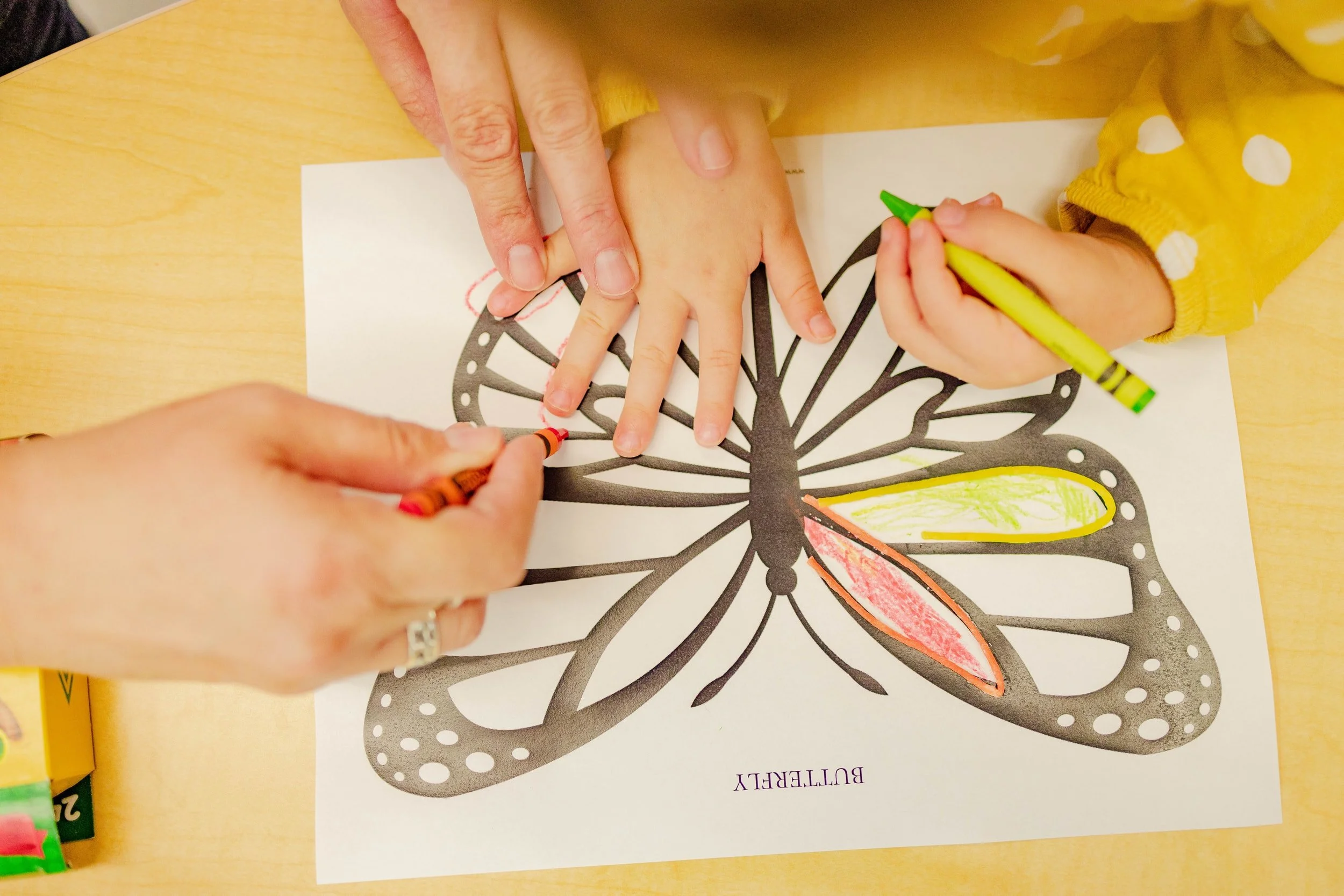100 Activities for Grieving Children
“A Parent’s Guide to Managing Childhood Grief, by the counselor and play therapist Katie Lear, is particularly welcome right now. Kids of different ages and genders greive differently, and Lear shows you how to help your child cope.”
A Parent’s Guide to Managing Childhood Grief
by Katie Lear, LCMHC, RPT, RDT
Help your child navigate grief through play-based activities designed for kids and their caregivers.
Connect with your child during a difficult time to deal with feelings in a healthy way, mourn your loss, and rebuild a hopeful future together.
An activity-based guide to the many feelings and stages of grief available when you need it most—at home with your child.
Help your child navigate grief through play-based activities designed for kids and their caregivers.
Read the New York Times Review of A Parent’s Guide to Managing Childhood Grief.
Support for Caregivers
There’s no guidebook for grief, and parents and caregivers have a big job when it comes to helping their children through a loss. In this book, parents learn:
How children grieve differently than adults
How to support your child without forcing them to talk
What research says is helpful and unhelpful for young grievers
How to explain death to children, including death due to difficult circumstances like suicide, illness, and overdose
Warning signs that your child needs extra support
Activities for Kids
We can’t take a child’s grief away, but we can help them learn to handle it so they can continue to grow and thrive. Through play, kids can learn:
Age-appropriate information about death, grief, and loss
How to cope with guilt about a loved one’s death
Skills to manage anger, jealousy, anxiety, sadness, and other complicated feelings
How to keep a loved one’s memory alive
Ways to find meaning, purpose, and hope after loss
Extra Resource Bundle for Grieving Kids and Parents
My book is currently available for presale. In the meantime, I’ve pulled together 5 additional activities you can use right away to help your child process feelings of grief. This includes an art activity inspired by Encanto, which sadly didn’t come out in time for the book!
Many grieving children experience anxiety after a loss. In this resource bundle, you’ll also find a discount code to access my anxiety coping skills course for 40% off.
Enter your email and proof of purchase in this form, and I’ll send the resources your way.
Available through all major booksellers
It’s Not Easy to Talk About Grief with Kids.
It’s not even easy to talk about grief with other adults. It’s heartbreaking, scary, and there aren’t any easy answers. But kids are looking to us to figure out how they should be thinking and feeling about their loss. When a grandparent, parent, sibling, or other loved one dies, kids are left with a lot of questions—whether or not they’re asking them out loud. Grieving children may wonder:
Did I do something to cause my loved one to die?
What happens to my loved one after they die?
Are the feelings I’m having normal?
Am I safe? Is my family safe?
Why did this unfair thing happen to me, and not somebody else?
My parent is going through a lot…will I upset them if I talk about how I’m feeling?
Kids who don’t get a chance to talk about their grief may develop misunderstandings about what happened that keep them from healing. Talking with your child about grief is hard, but helpful. Gathering together to do an activity makes it a little easier to get conversation flowing.
Grief Activities for Children Inspired by Play Therapy and CBT
Play helps children express feelings that are too big to put into words. It’s how kids naturally make sense of what’s happening around them. By creating playful opportunities for children, we can help them feel more comfortable opening up about tough subjects like grief and loss. Inside A Parent’s Guide to Managing Childhood Grief, you’ll find ways to use drawing, painting, clay, music, and make-believe to help children express themselves. You’ll also discover child-friendly skills for soothing anger, worry, and sadness.
The grief activities you’ll find in this book are inspired by my work as a children’s therapist, but modified to make them work for parents and kids at home. An activity book will never be a replacement for therapy. However, grieving kids don’t always need to see a counselor. As painful as grief is, it’s a natural and healthy reaction to loss. Death is a part of life, and so is grief.
Play and creative activities help grieving children to:
Improve and strengthen parent-child relationships
Reduce stress
Find a safe outlet for anger and strong emotions
Increase feelings of safety and security
Deepen their understanding of grief
Activities Designed to Work Face-to-Face or Online
Grief is overwhelming, and caregivers may find themselves pulled in many directions when a loved one dies. Other caring adults can help ease this burden by participating in grief activities with children, whether they are near or far. No matter where you live, you can help support the grieving child in your life.
Platforms like Zoom and FaceTime make it easier to keep in touch with each other. However, it’s not always so easy to figure out what to do with kids in those online calls! Many of the activities in A Parent’s Guide to Managing Childhood Grief were designed with online interaction in mind. They work great for time spent together in person, but you’ll find ways to make them work well virtually, too.
Whether you’re playing charades on Zoom, watching a video together, or sharing favorite music, activities help you spend quality time from a distance. By using technology in creative ways, kids can express their feelings, share their experiences, and feel a little bit less alone. Just check the top of each activity page to see if it’s online-friendly.




